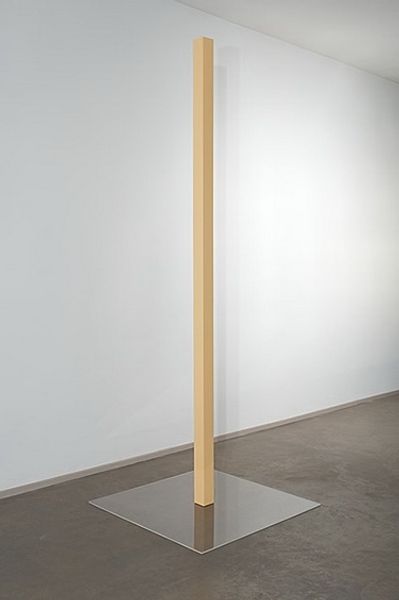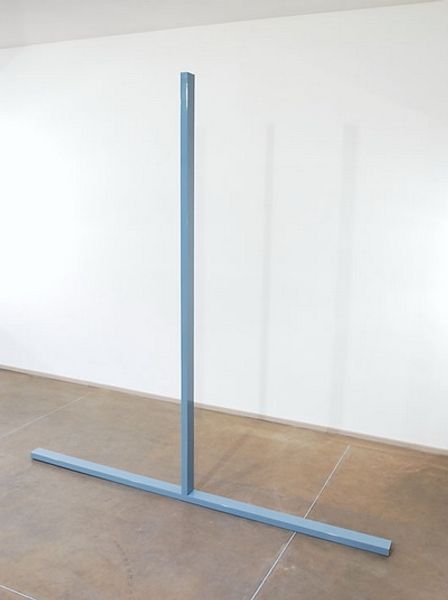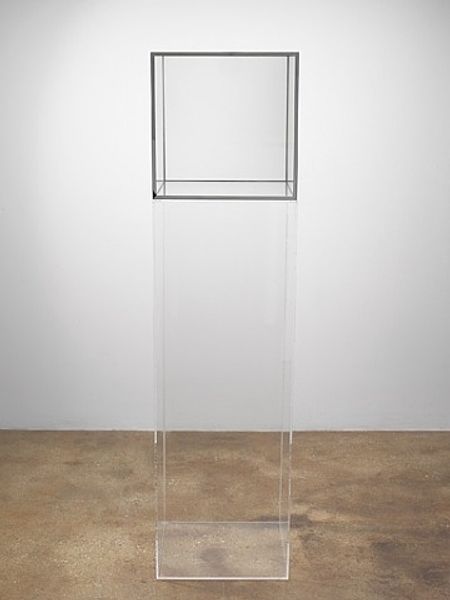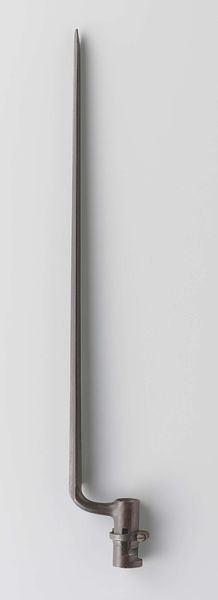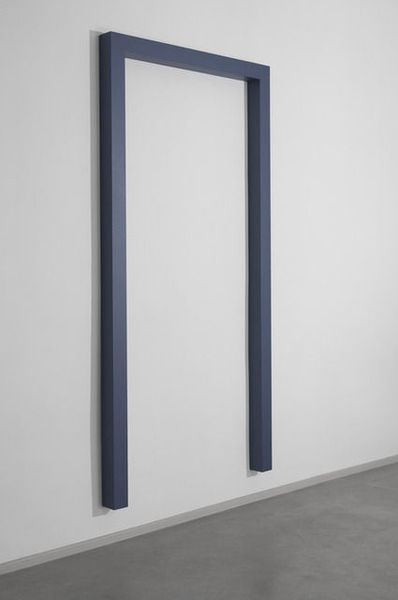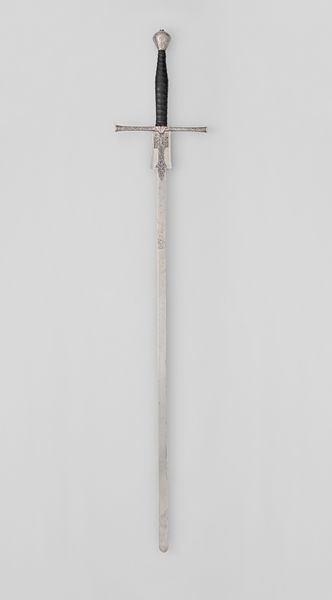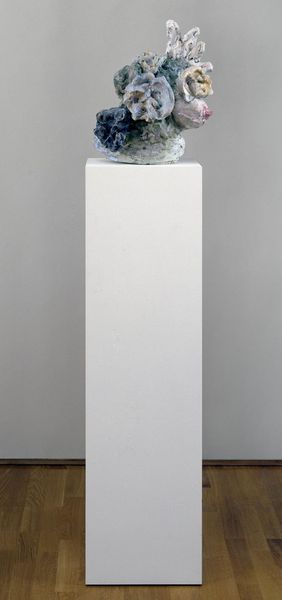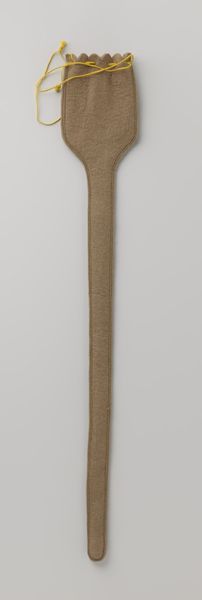
metal, sculpture
#
minimalism
#
metal
#
form
#
geometric
#
sculpture
#
abstraction
#
line
Copyright: Bob Law,Fair Use
Editor: This is Bob Law's "Tall Obelisk with Two Holes and a Notch," created in 1981, and it's a metal sculpture. It has a somber tone due to its dark monochromatic coloring, contrasting starkly with the stark white wall in the gallery. What meaning do you see in this piece? Curator: Considering the socio-political landscape of the 1980s, dominated by Cold War anxieties and the rise of neoliberal policies, minimalism such as this can be read as a form of resistance. Law's reduction to essential forms questions the excess and superficiality of consumer culture and power structures. How do the holes and notch influence your reading of the piece? Editor: I suppose I hadn't thought about the notches as an absence. That definitely seems to invite questioning the meaning behind industrial advancement. I initially saw them as decorative rather than… subversive. Curator: Exactly! Now, let’s consider the title, “Obelisk”. What historical associations does that bring to mind? Can you think about power, memorialization, or even the male figure in relationship to the Minimalist approach? Editor: I’m thinking about ancient Egypt, pharaohs, but also war memorials and monuments in Washington D.C. Curator: Precisely! Now think about how Law's abstraction interacts with these connotations. It suggests a critique of traditional power structures by deconstructing their visual language, creating voids that invite viewers to fill the gaps. Consider how a feminist lens would address phallocentrism. Do the voids challenge the very notion of an imposing, solid presence? Editor: That’s fascinating! I see it now; it is meant to challenge ideas rather than just existing as an aesthetic experience. Curator: Right. Minimalist art may seem purely formal, but, it engages in dialogue about art, society, and power. This engagement is especially poignant if it encourages the audience to think about structures and institutions of inequality and inequity. Editor: It’s changed how I view minimalism, thinking about it less as 'empty' and more as a charged void. Curator: And hopefully to consider how, in a way, everything can be considered political.
Comments
No comments
Be the first to comment and join the conversation on the ultimate creative platform.
